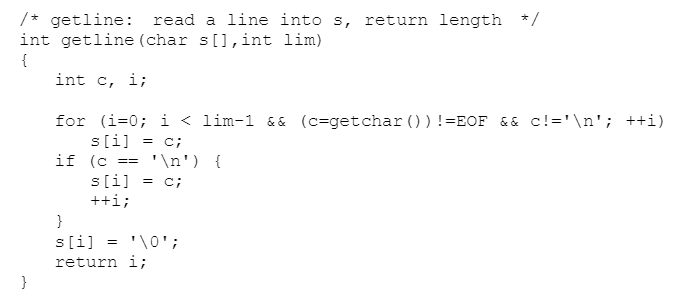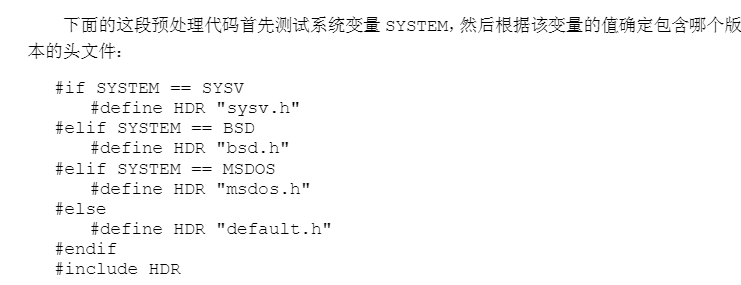c程序设计语言 by K&R(一)一些c语言基础知识
出自《c程序设计语言》 by K&R:
一、导言
二、类型、运算符与表达式
三、控制流
1. 字符输入与输出
getchar() 和 putchar(),输入一个字符、输出一个字符
#include <stdio.h>
#include <stdlib.h>
int main(void) {
int c = getchar();
while(c != EOF){
putchar(c);
c = getchar();
}
return 0;
}
更简洁的形式
#include <stdio.h>
#include <stdlib.h>
int main(void) {
int c;
while((c = getchar()) != EOF){
putchar(c);
}
return 0;
}
输入与输出
dfadkfl
dfadkfl
fopawfjkw
fopawfjkw
2. 字符数组
实现getline函数

3.定义和声明的区别
“定义”表示创建变量或分配存储单元,而“声明”指的是说明变量的性质,并不分配存储单元。
4. ~与!
按位取反 和 逻辑非
#include <stdio.h>
#include <stdlib.h>
int main(void) {
int a = 0;
int b = !a;
int c = ~a;
printf("%d %d\n", b, c);
return 0;
}
输出:
1 -1
5.整数与字符串的相互转换
- atoi (alphanumeric to integer)
int atoi(const char *nptr);//字符串转整数函数,nptr: 要转换的字符串
- atol (alphanumeric to long integer)
long int atol(const char *str)
- itoa (integer to alphanumeric)
char* itoa(int value,char*string,int radix);//value: 要转换的整数,string: 转换后的字符串,radix: 转换进制数,如2,8,10,16 进制等。
- 利用 sprintf() 函数和 sscanf() 函数
ANSI C 规范定义了 stof()、atoi()、atol()、strtod()、strtol()、strtoul() 共6个可以将字符串转换为数字的函数
6. 宏定义: 将替换文本在直接插入到代码
- #define的一些注意事项
- 注意打括号
如果有以下定义:
#define square(x) x*x
那么square(z+1) 将会是 z + 1 * z + 1
正确的定义应为
#define square(x) ((x)*(x))
- max(a++, b++) 中的a、b都会执行两次自增操作
#define max(A,B) ((A) > (b) ? (A) : (b))
-
#undef 取消名字的宏定义
-
## 用于连接实际参数
#define paste (front, back) front##back
paste(name, 1)将建立记号name1
- 条件包含
- #if:
对其中的表达式求值,如果该表达式不为0,则包含其后的各行,直到遇到#endif、#elif、#else为止

- defined(名字):
如果该名字已定义,则其值为;否则为0。

- #ifdef 和 #ifndef 用来测试某个名字是否定义
#ifndef HDR
相当于
#if !defined(HDR)



